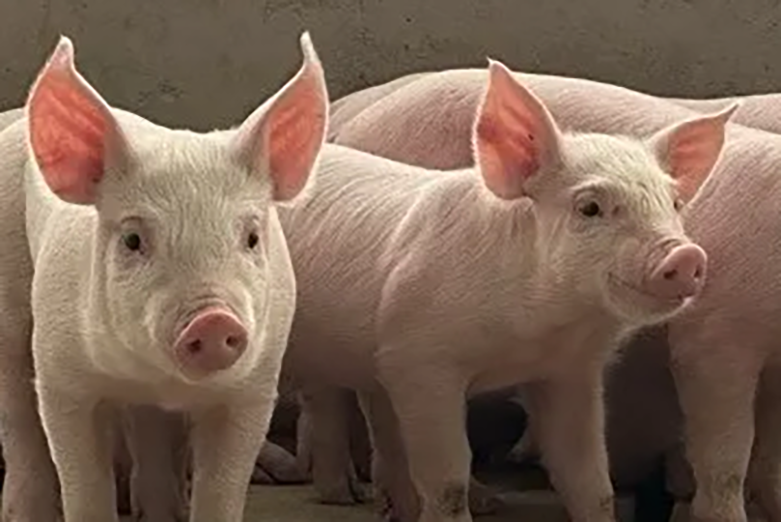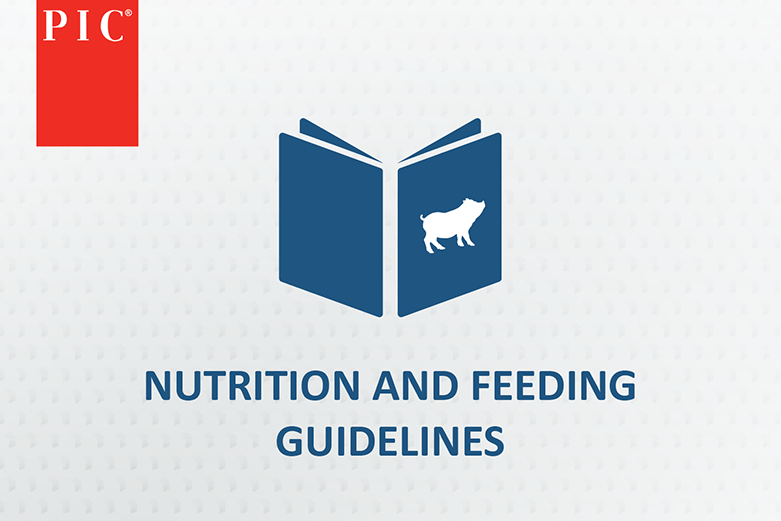A well-designed feeding program can help you meet your operational goals for sow farm efficiency and profit by minimising feed waste and maximising sow productivity.

An effective sow feeding program starts with breeding gilts within the right window of weight and feeding them according to PIC recommendations during their first gestation. This can help maximise the number of sows in ideal condition at first farrowing.
Additionally, knowing and maintaining an ideal sow body condition score is a key strategic area for long-term success. The body condition of sows in the unit is closely related to the profitability of the sow farm because it impacts sow longevity and reproductive performance. Keeping sows in the ideal body condition – not too fat and not too thin – is in the best interest of your bottom line. A successful feeding program includes recording data and linking body condition to feeding so you can correctly adjust each sow’s feed ration.
Efficiency and economics are two reasons to implement a feeding program that focuses on feeding each sow to achieve and maintain ideal body condition. The best practices for starting a successful feeding program are education, patience, and recordkeeping.
Educate sow farm employees
Your team is a key part of a successful sow feeding program. They not only need to understand what to do but how their work is part of a bigger process and a bigger goal. It’s important to educate workers who interact daily with sows.
“After several farm visits often together with the farm veterinarians, I realized that a healthy animal is often understood to mean a larger and fatter animal. Sows are not knowingly overfed. It’s just done what is considered right.” This is a common statement made by PIC’s Technical Service staff.
Sebastian Casiro Technical Services Manager UK recommends seeking feedback from farm employees. “We need to say, ‘This is important, and we need you to try it,’” he adds. “We might get negative feedback from workers at first. But we need to listen to them, understand any limitations and constraints during the process and answer their questions and help them feel involved.”
Sow feeding program implementation takes time
Patience is important when starting a sow feeding program. It will take 20 weeks for the first group to make a complete cycle through the program. If you want the entire sow farm to go through the program, it will take approximately 40 weeks. Proper implementation requires a slow change in feeding to safely improve the body condition of sows. It’s critical to the health of the animals and the long-term success of the program to allow the full time to see if the program is working.
“We need at least one full reproductive cycle to start seeing or start evaluating the results from the first groups that were put into the feeding program,” says Jordi Camp, Ph.D., Nutrition Manager PIC Europe. “If you want to evaluate the entire herd, you need a much longer time to make sure every sow has been in that process for at least one reproductive cycle.”
Measure and record sow feeding data
To make sure the program is working or to know how to fix it when it isn’t working, you’ll need to have data to compare and review. Keeping consistent records of body condition and feeding is critical.
“If the percentage of sows in ideal condition is increasing and the percentage of the fat or thin sows is decreasing during gestation, body condition management is moving in the right direction,” says Camp. “Without monitoring the data, it’s really hard to say you are going in the right or wrong direction.”
Keeping records of sow body condition throughout the reproductive cycle can be especially helpful. You’ll be able to see if your breeding groups are in the proper body condition and, if not, determine how you can correct the issue.
“There are four critical points to measure body condition: Weaning, pregnancy check, 90 days of gestation and at farrowing room entry,” says Sebastian. “You see the evolution if you are doing the right thing. Or, if not, you can determine if you need to adjust the feed levels or make changes to nutritional formulations. But if you don’t have any data, what you don’t measure, you don’t control, and you cannot improve.”
The correct tools can help you use these best practices to successfully implement a sow feeding program. PIC has developed tools to get you and your operation started. Ask your PIC Account Manager or Technical Service Contact for more information.




